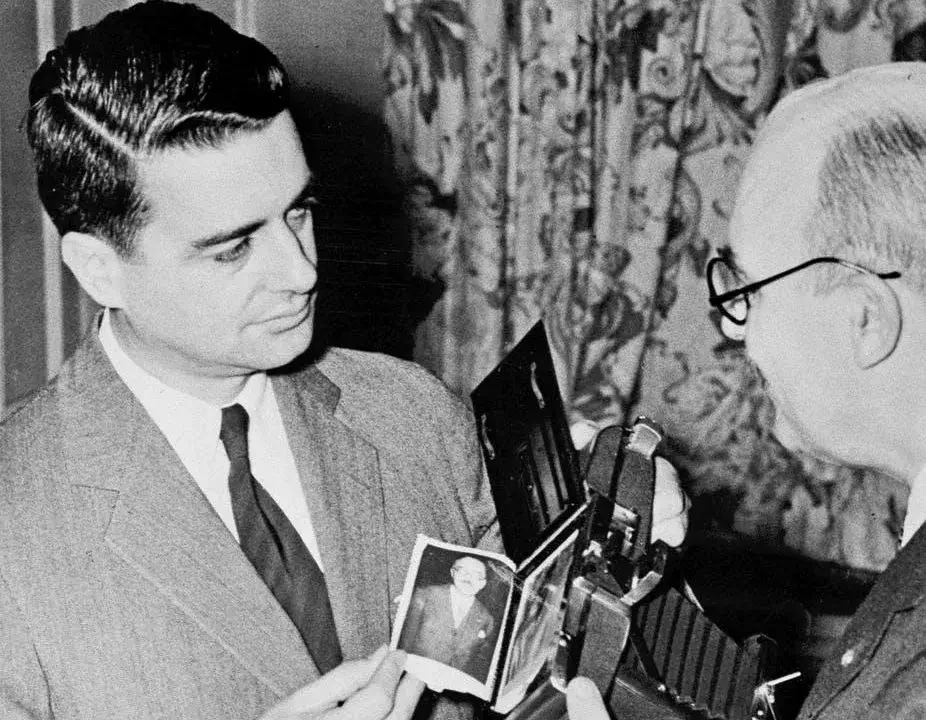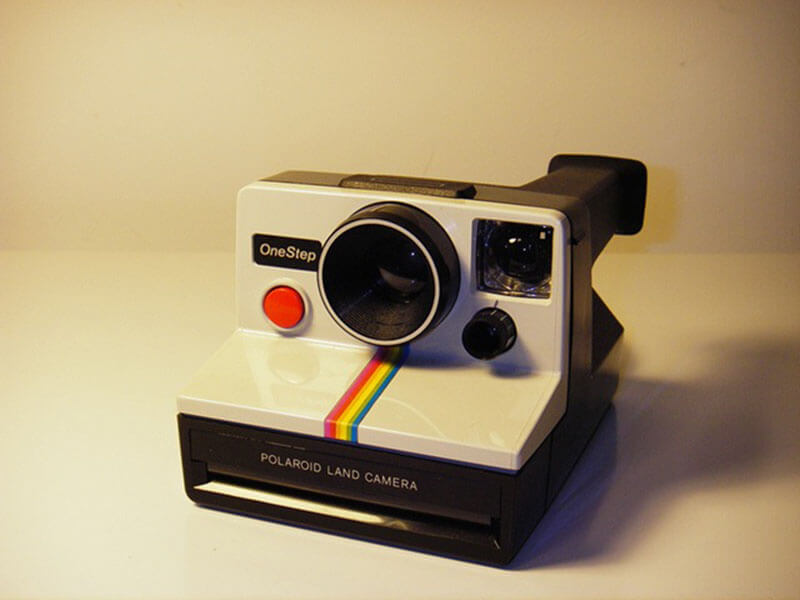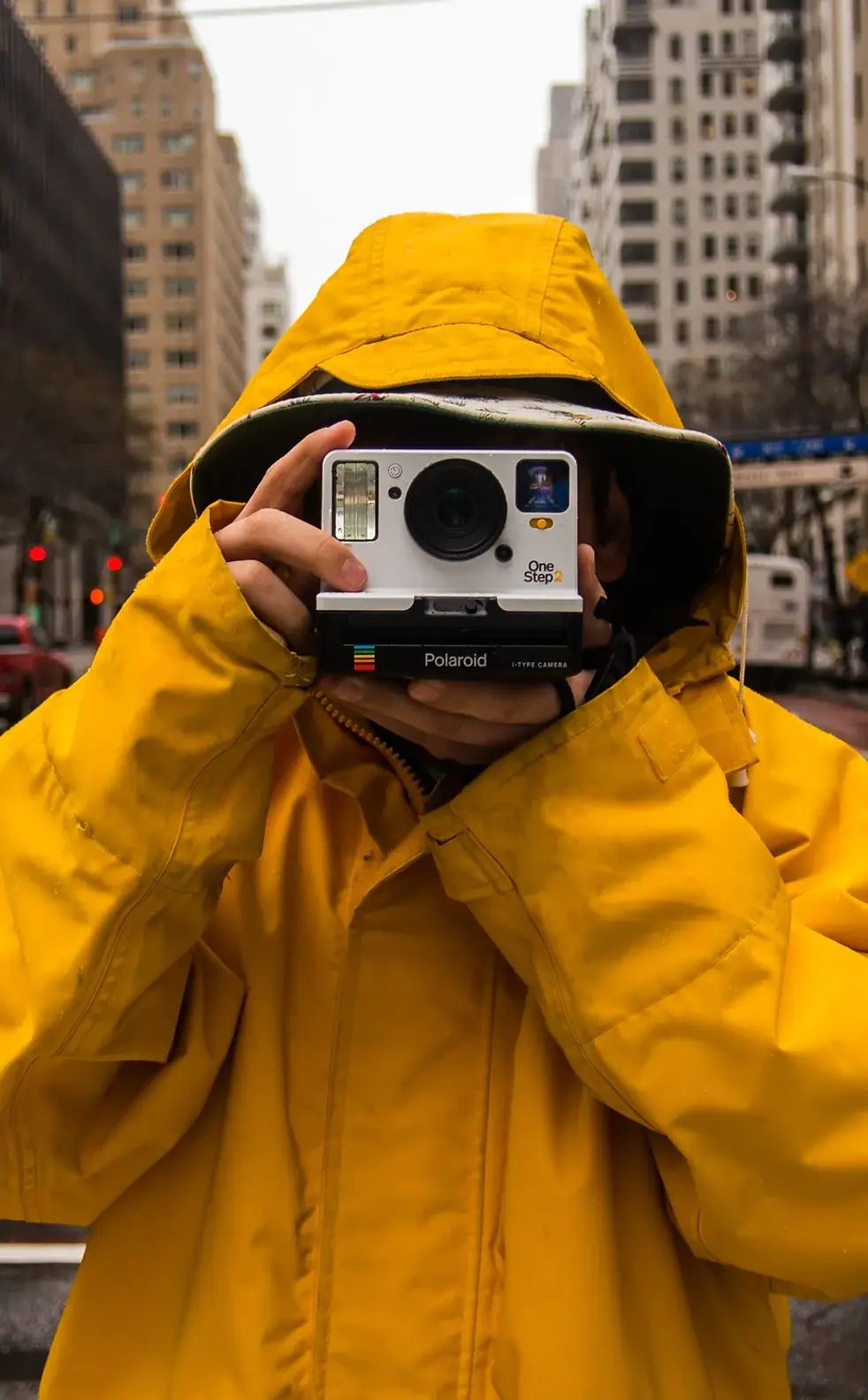Hey there! Have you ever wondered how we can take pictures with our phones and see them right away?
Well, a long time ago, there was something super cool called an instant camera before phones and digital cameras.
This invention lets people take pictures and see them develop immediately, like magic.
This allows people to enjoy their photos without waiting to be developed at a store.
So, the next time you take a quick selfie with your phone and see it instantly, you can remember that an invention called the instant camera started this good idea a long time ago.
When Was the Instant Camera Invented?
The instant camera, a marvel that allows users to obtain printed photos immediately after clicking the shutter, was invented in 1948 by Edwin Land, an American scientist and inventor.
Land’s company, Polaroid Corporation, introduced the first commercial instant camera, aptly named the “Polaroid Land Camera.”
This revolutionary invention marked a significant leap in photographic technology, enabling people to see their photographs within moments of capturing them.
Exploring the Evolution of Instant Cameras
The journey of instant cameras has been one of continuous innovation and improvement. Here’s a glimpse into their evolution.
Land’s Breakthrough Invention
His interest in light polarization drove Edwin Land’s invention of the instant camera.
He developed a camera that included self-developing film, which utilized a chemical process to produce a visible photograph shortly after exposure.
The Polaroid Land Camera was the first of its kind, combining camera and printer in one device.
This innovation marked an attention shift in photography. Unlike traditional cameras that required time-consuming development processes, Land’s creation produced instant photographs.
This revolutionary invention offered many uses and excitement, changing how people captured and shared memories.
The entire development later gave birth to a series of some of the best instant cameras.
Integration of Color
In the following years, Polaroid made significant strides in instant photography.
1963 the company introduced the first instant color film, revolutionizing how people captured memories in various colored images.
Before the introduction of color instant film, most instant photos were monochromatic, capturing moments in shades of black, white, and gray.
However, the innovation of color integration brought a new dimension to instant photography.
The integration of color also had social implications. Instant photos became more famous and attractive as they captured the true scenes of a moment.
One-Step Photography
The 1970s witnessed the introduction of the SX-70, a foldable instant camera that was praised for its ease of use and best design.
This model allowed for one-step photography, further improving the availability of instant photography to the masses.
Users only needed to point, shoot, and wait briefly for the photograph to develop.
This user-friendly approach to photography makes it available to a wider audience.
The Digital Age and Beyond
With the advent of digital technology, instant cameras faced challenges.
However, in the early 2000s, Polaroid released the PoGo Instant Mobile Printer, a mix of digital photography and instant printing.
This demonstrated the enduring look of instant photography.
The Impact of Instant Cameras on Society
The invention of the instant camera brought about several great changes.
1. Real-Time Gratification
Instant cameras brought an exciting change to how we experience photos. Think about it before: you’d snap a pic and then wait days to see it.
But with instant cameras, you hit that shutter button, and the photo Right there, in your hand, is the photo you just took.
It’s like magic. No more waiting, no more wondering. You get to relive that moment right away.
Whether it’s a goofy smile, a breathtaking sunset, or a candid family shot, you can instantly hold that memory in your hands.
2. Social Dynamics
Remember when you’d take a photo and excitedly gather around, waiting to see how it turned out?
Instant cameras made that even more fun. Instant photos became conversation starters at parties, events, or just hanging out.
You’d watch the image slowly develop, and everyone would share a laugh or an “aww” moment.
It brought people closer, turning moments into shared experiences.
Plus, those instant photos were like little keepsakes you could exchange, leaving you with a real memory to remember the good times.
3. Documentation and Creativity
The instant camera didn’t just capture scenes, and it captured creativity, too.
With no waiting, you could experiment with angles, poses, and styles immediately.
It was like having a mini frame in your hands. And remember how you’d stick those instant photos on your fridge or in an album?
It wasn’t just about keeping them safe; it was about creating a real story of your life.
Every shot was a snapshot of your journey, from family vacations to silly selfies.
The best part is that It encouraged everyone to become a photographer, capturing the ordinary and making it extraordinary, one instant click at a time.
Conclusion
The instant camera was invented a long time ago. A smart person named Edwin Land made the first instant camera, called the Polaroid camera.
People didn’t have to wait to see their photos anymore.
Before this amazing invention, people had to take pictures with regular cameras and wait for days to see how they turned out. But the instant camera changed everything.
It made taking pictures so much fun because you could share them with your friends immediately.
So, the next time you snap a quick photo with your smartphone, remember the journey that led to the instant pleasure of photography as we know it today.
Frequently Asked Questions
How Does an Instant Camera Work?
Instant cameras use self-developing film that contains chemicals needed to develop the photograph. When a photo is taken, the film is exposed to light, initiating a chemical reaction that produces a visible image.
Were There Any Instant Cameras Before Polaroid?
While Polaroid’s instant camera is the most famous, there were earlier attempts at achieving instant photography. However, none were as commercially successful as the Polaroid Land Camera.
How Has Digital Technology Impacted Instant Photography?
Digital technology initially posed challenges to instant cameras. However, the marriage of digital and instant in devices like the PoGo Instant Mobile Printer showcased the adaptability and interest of instant photography.








Leave a Reply